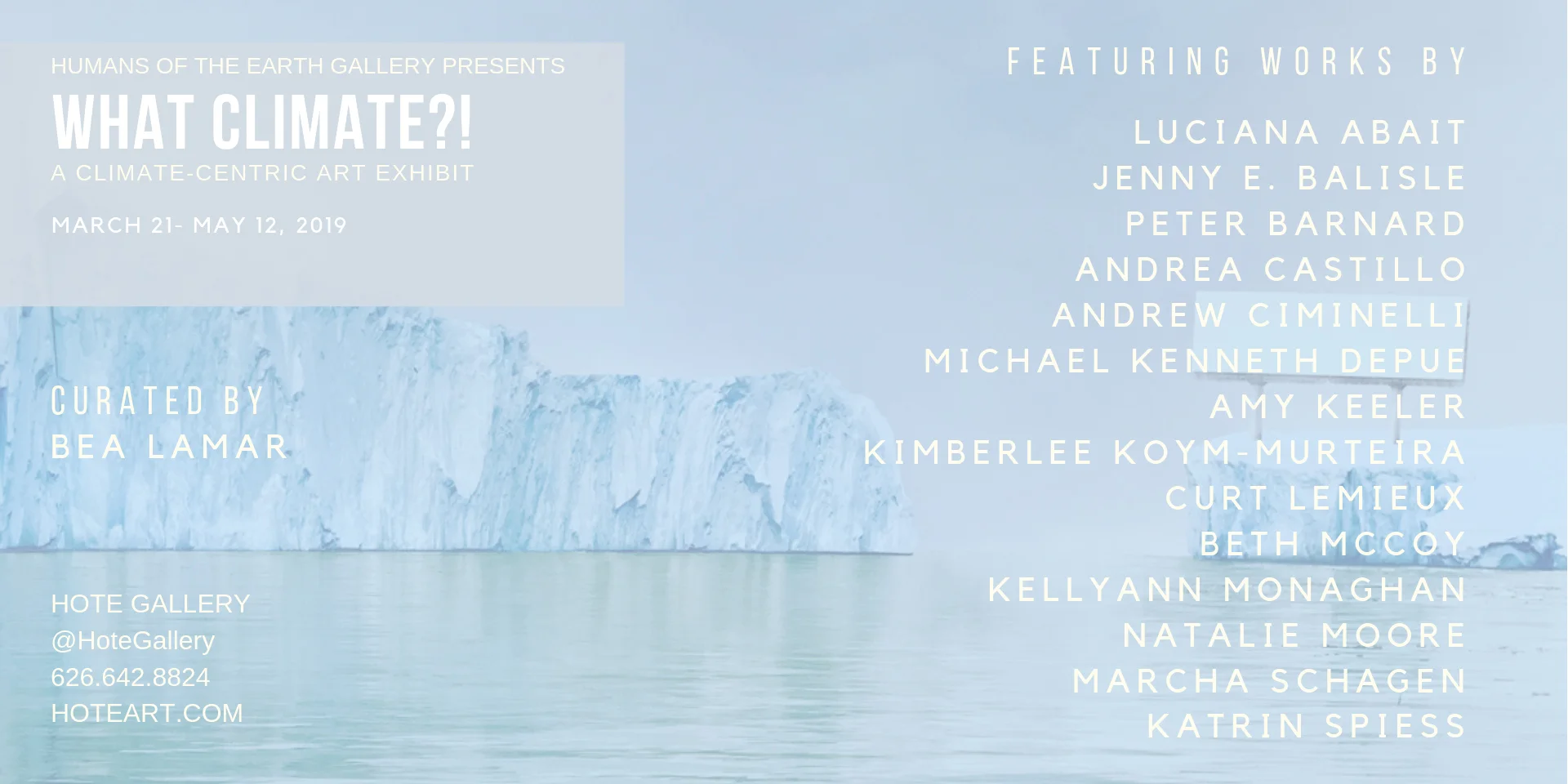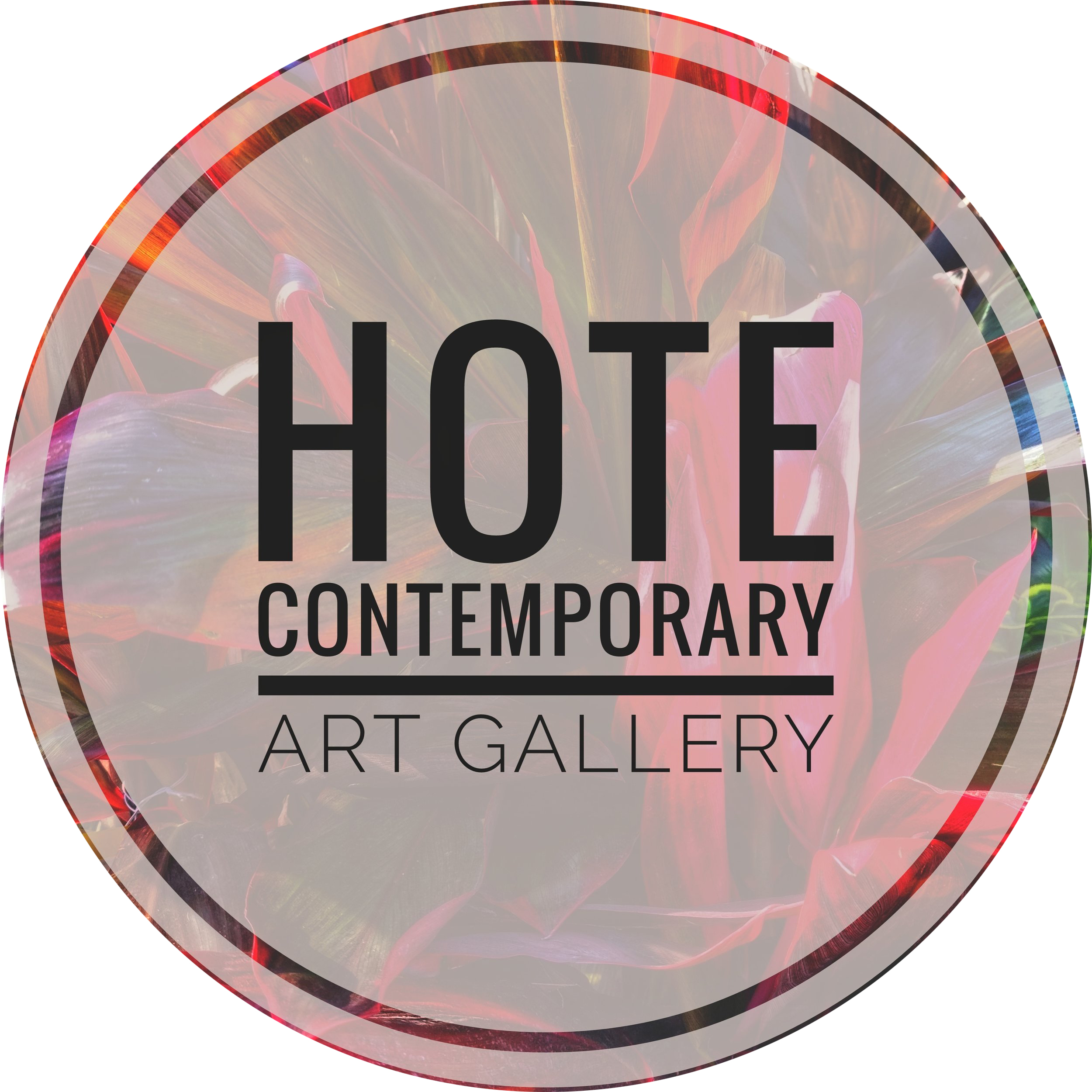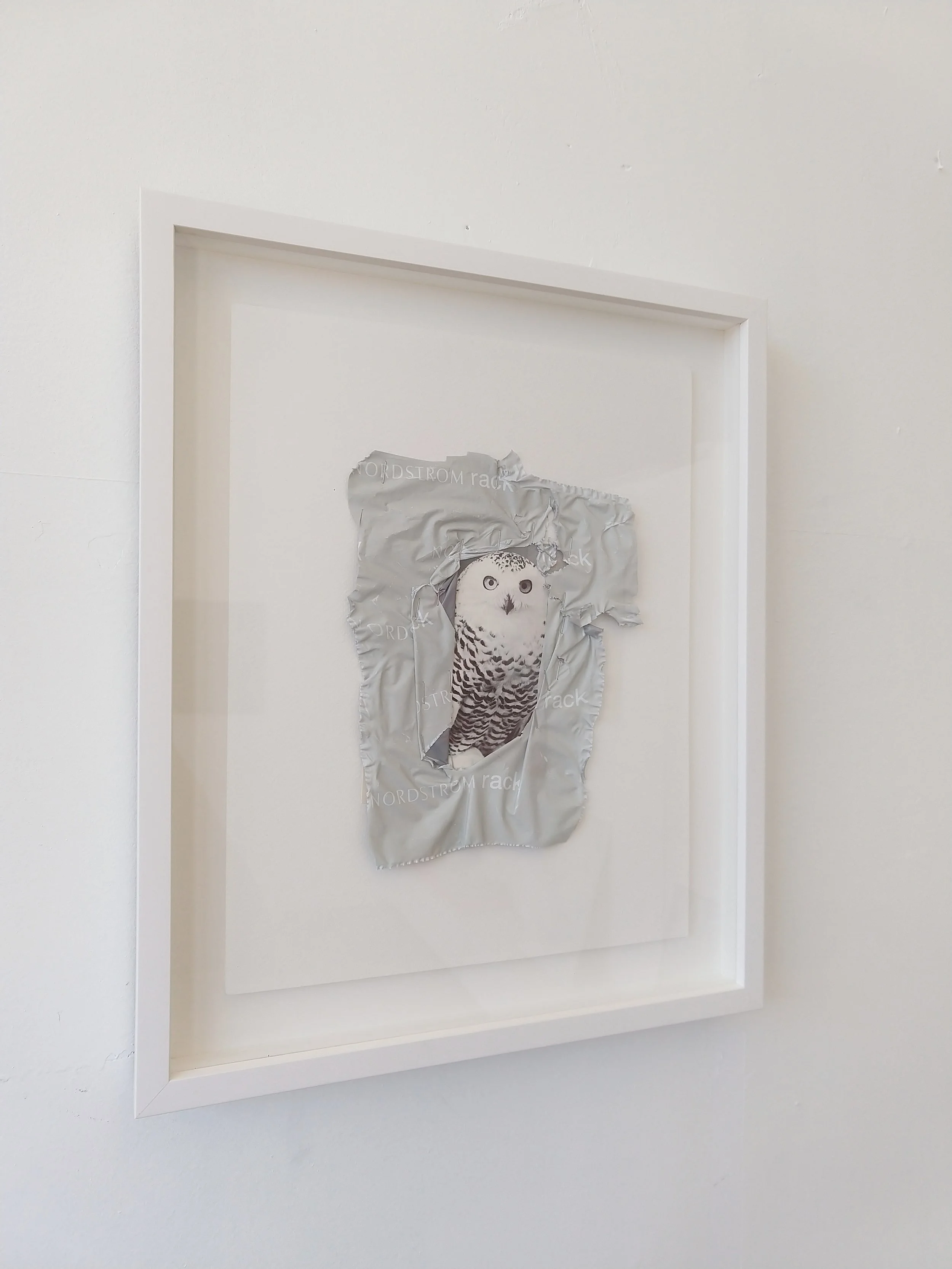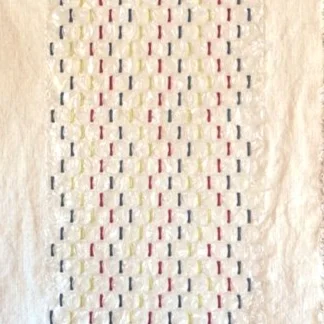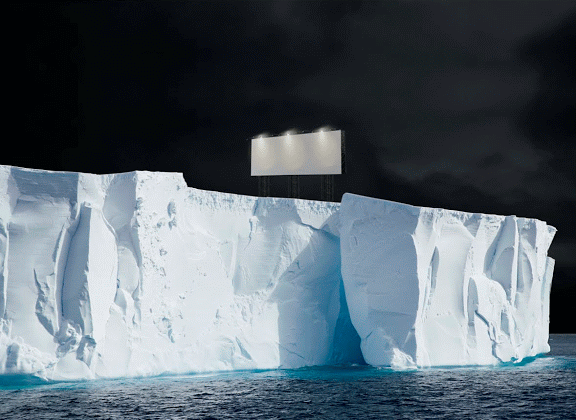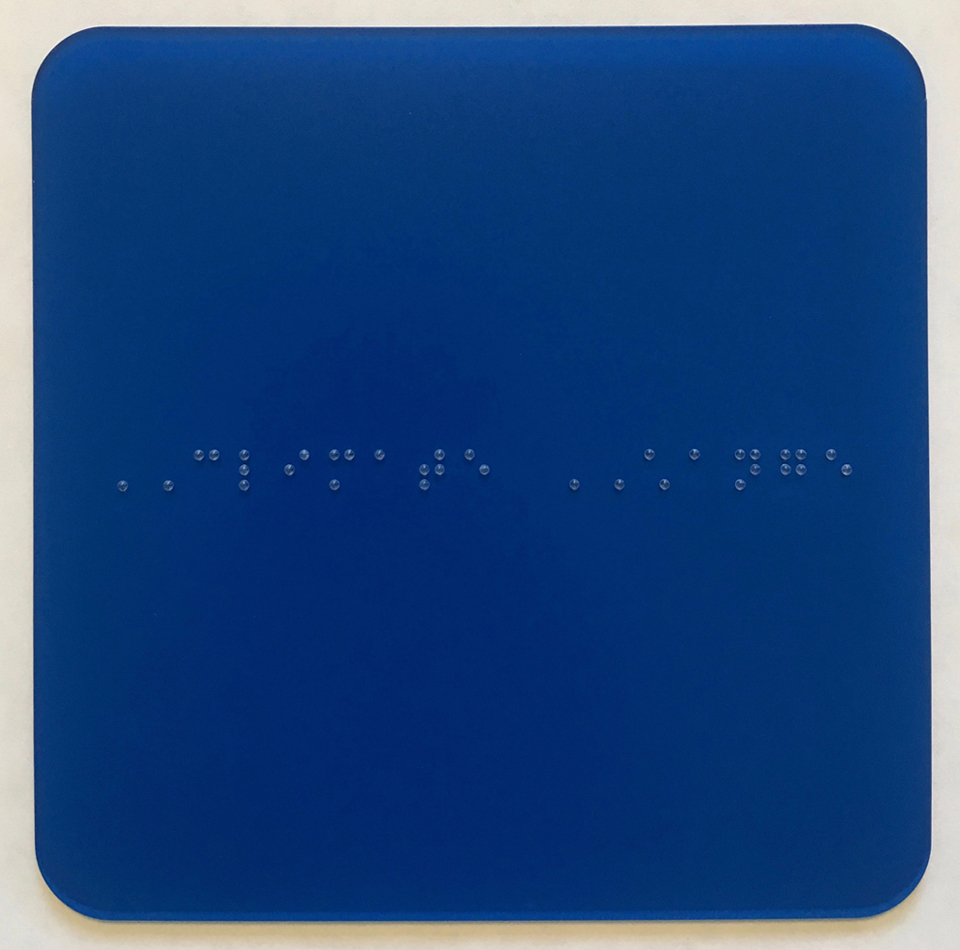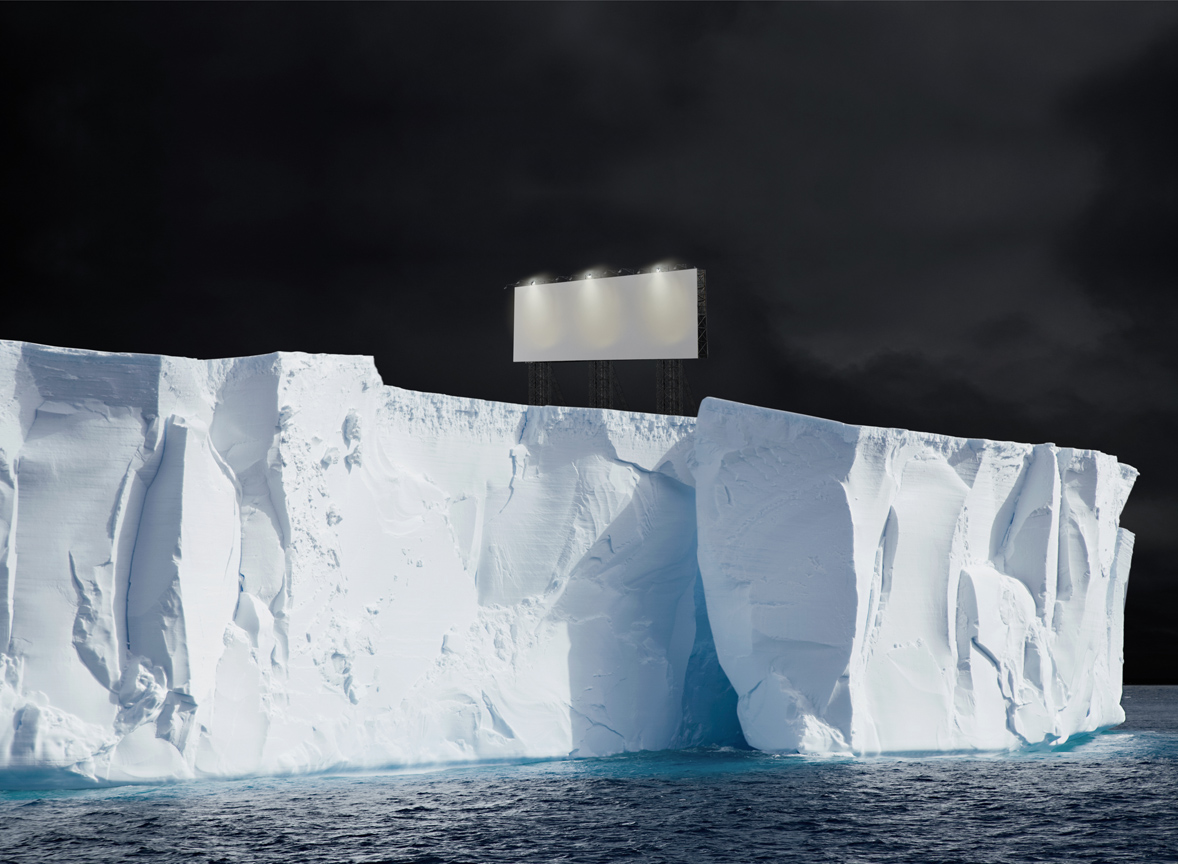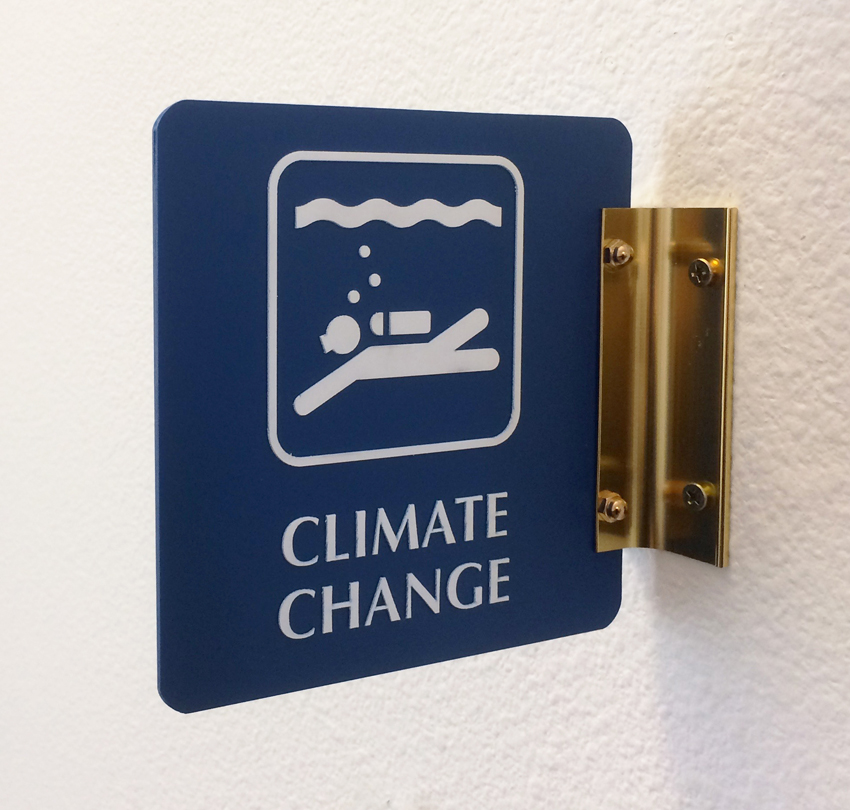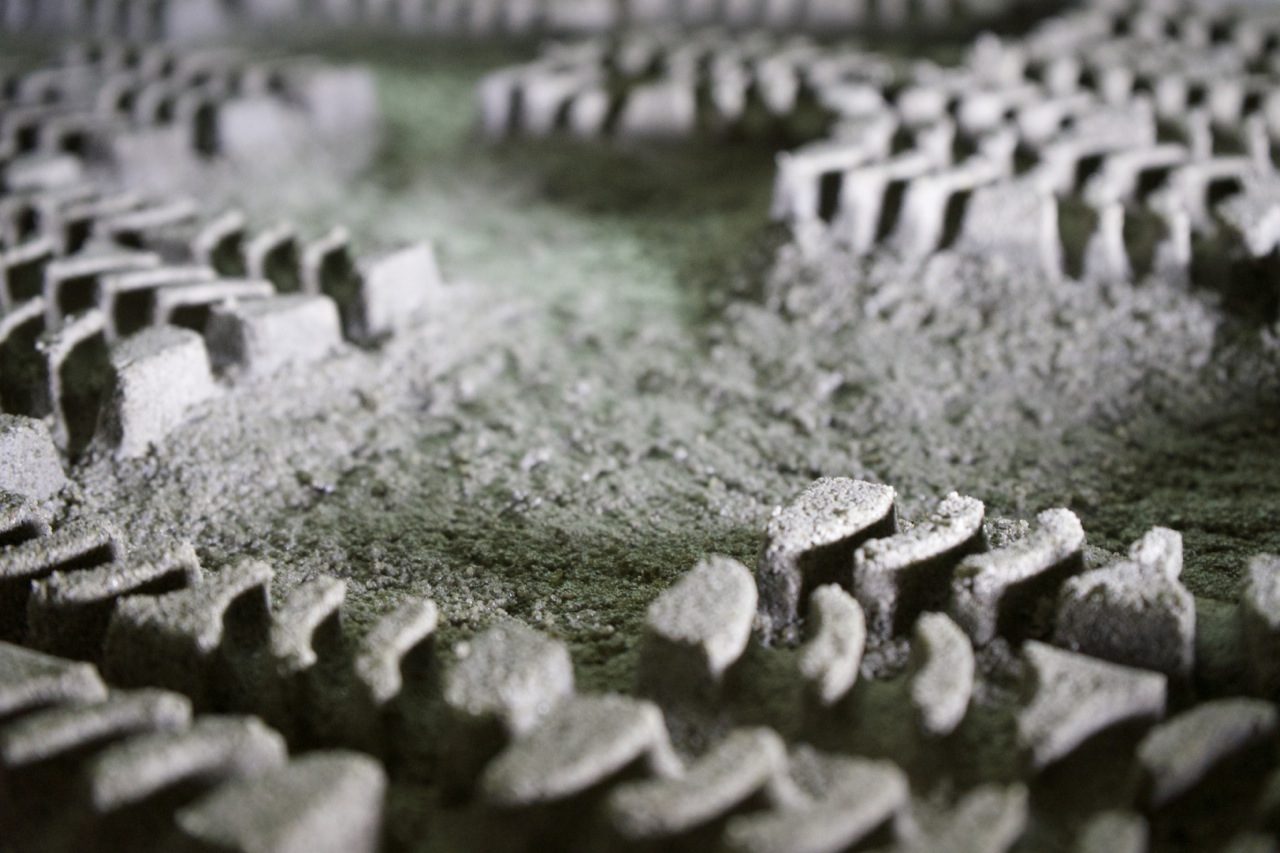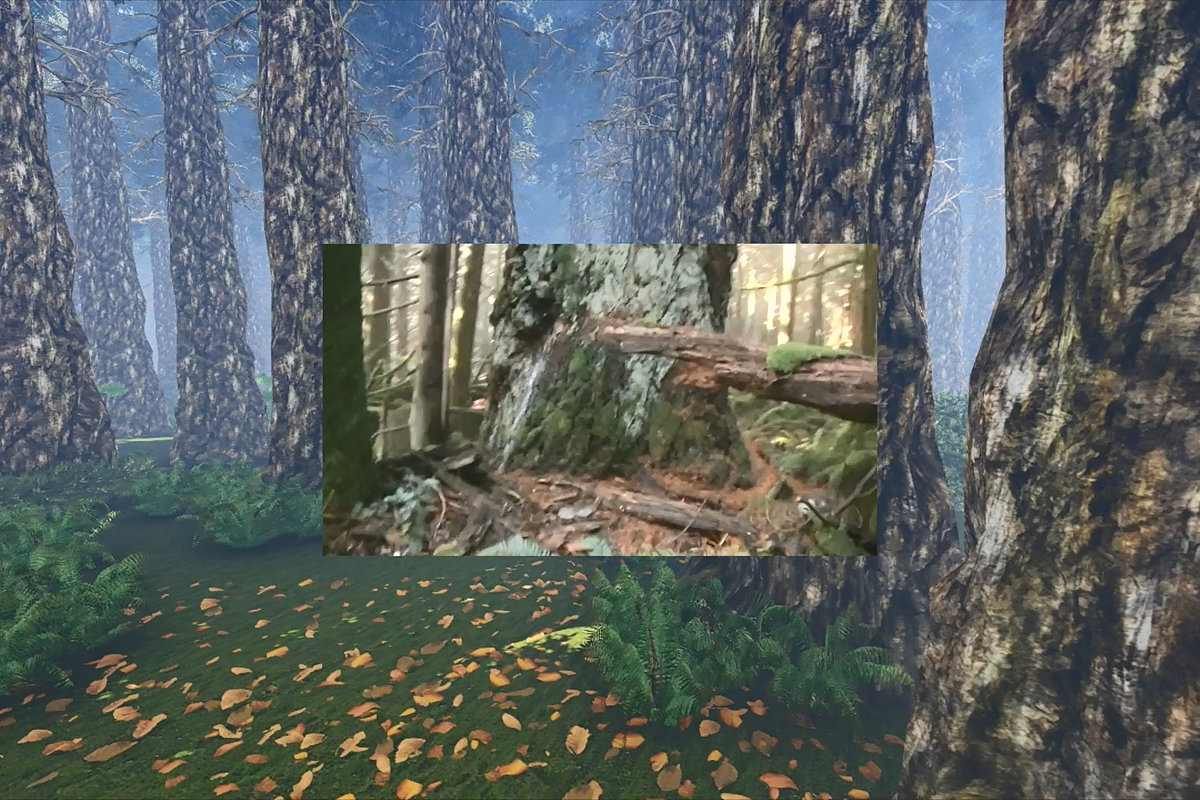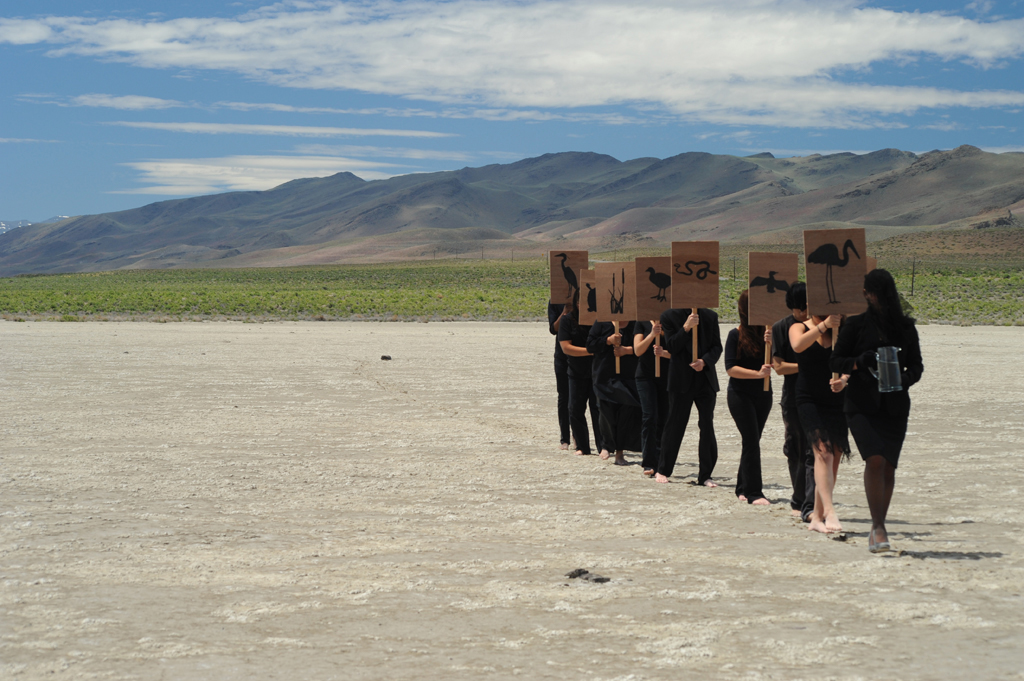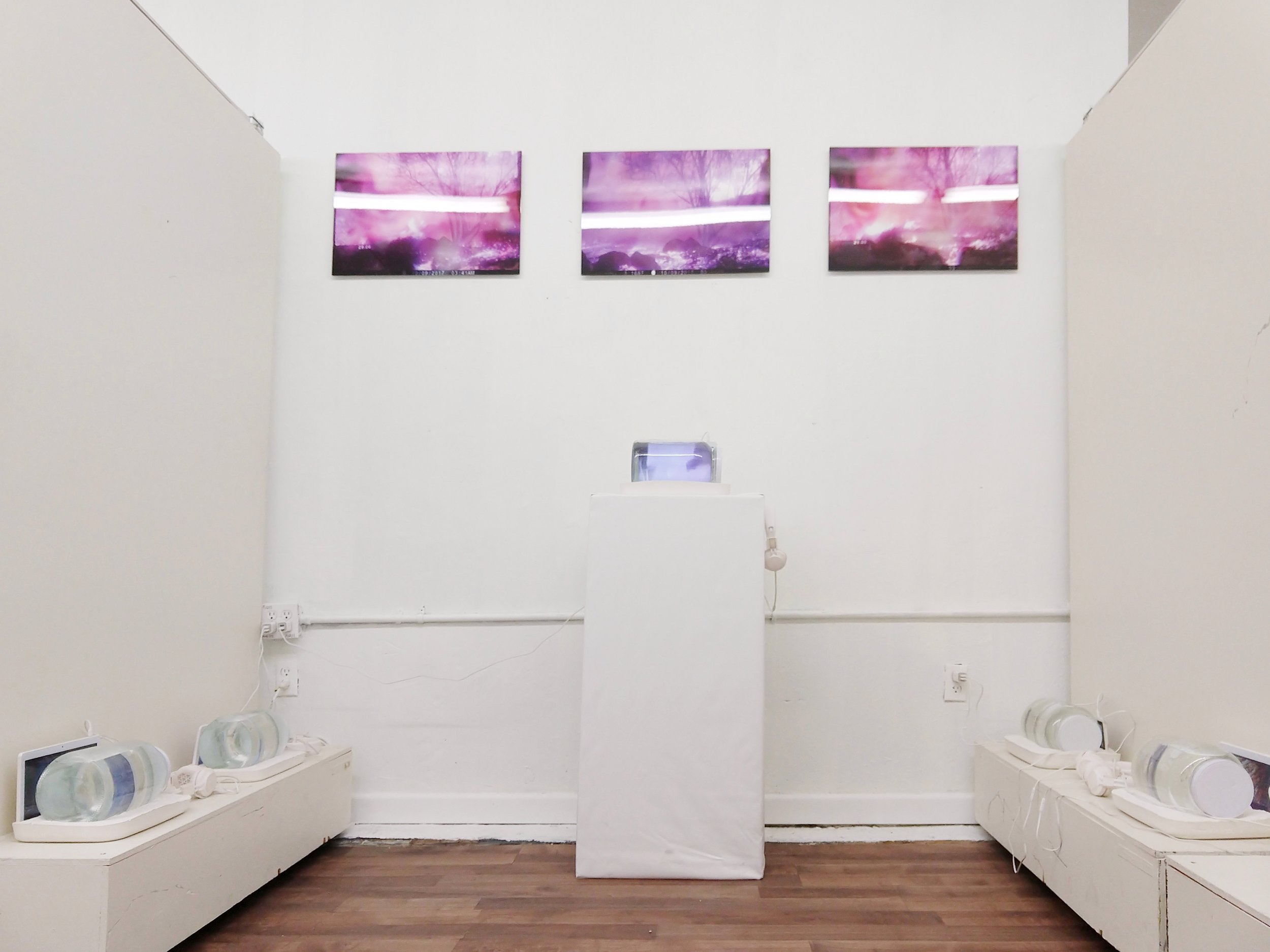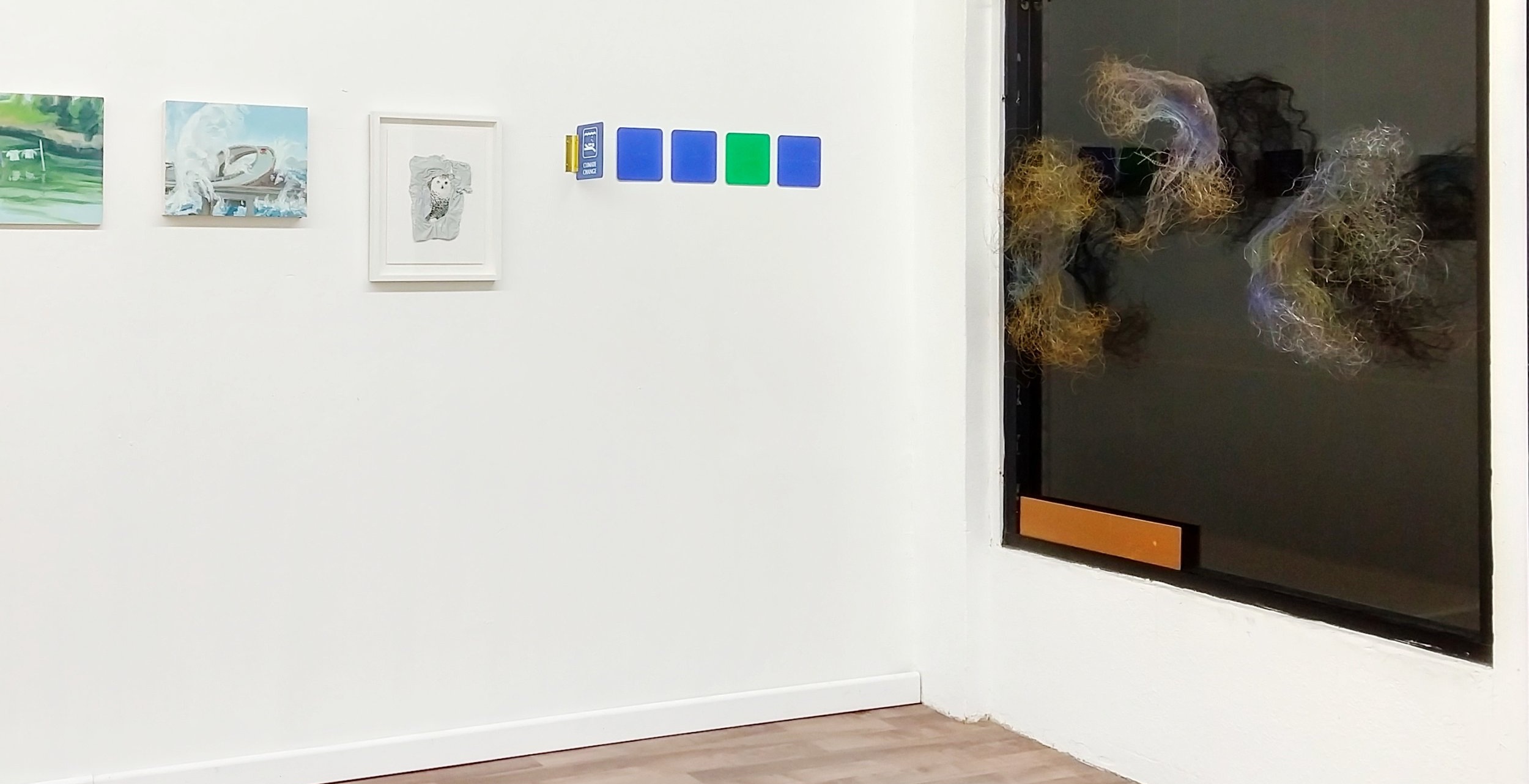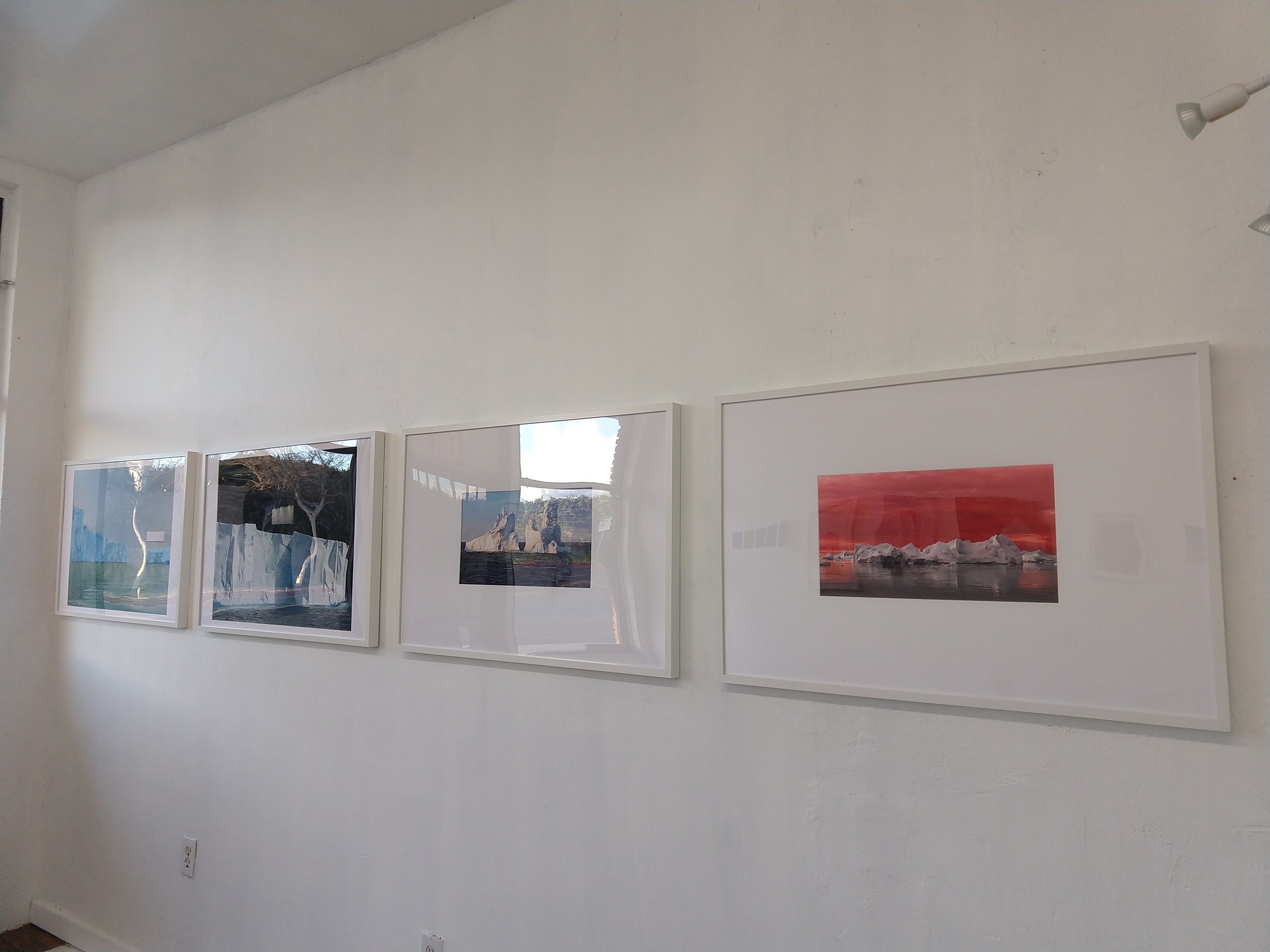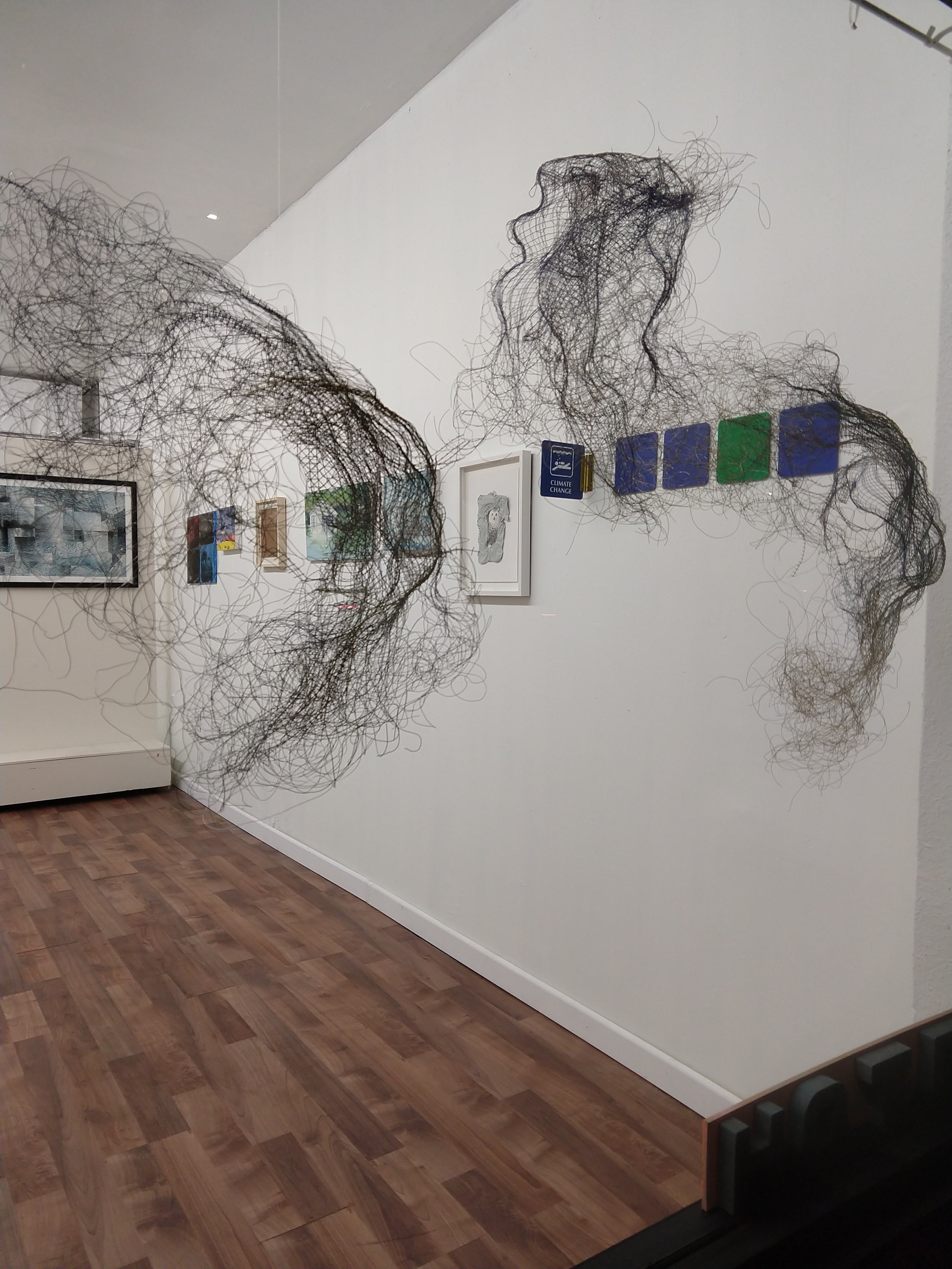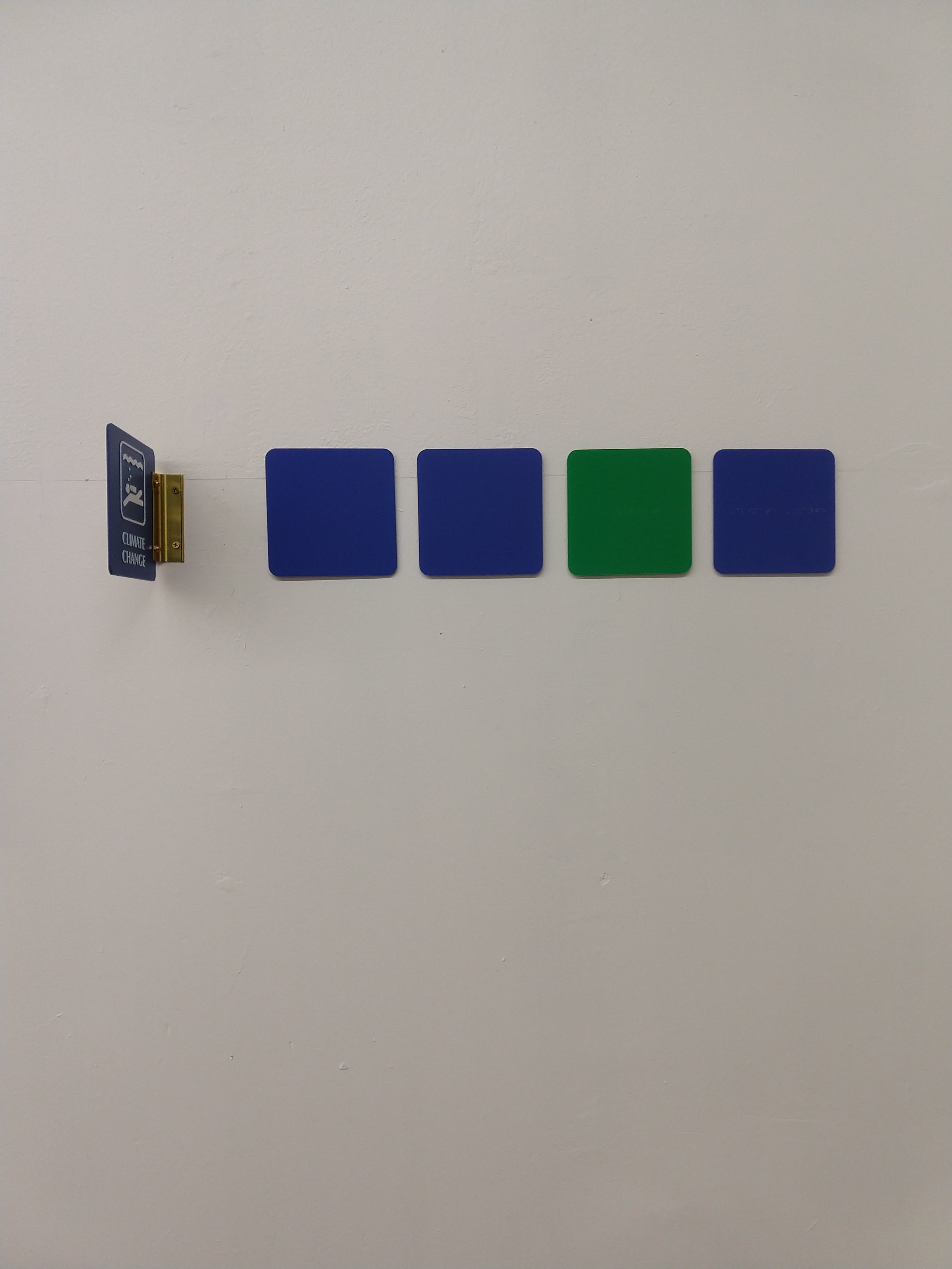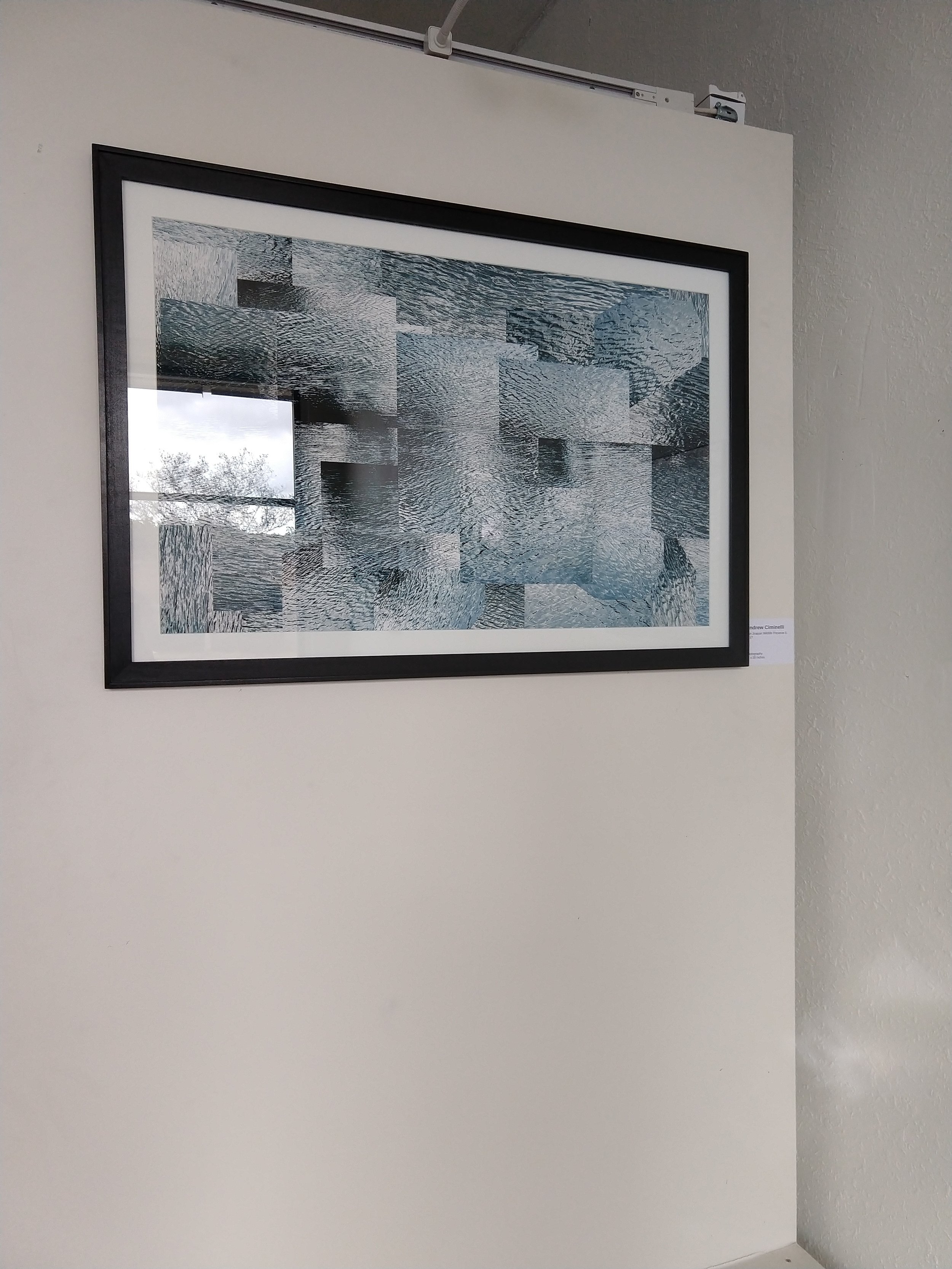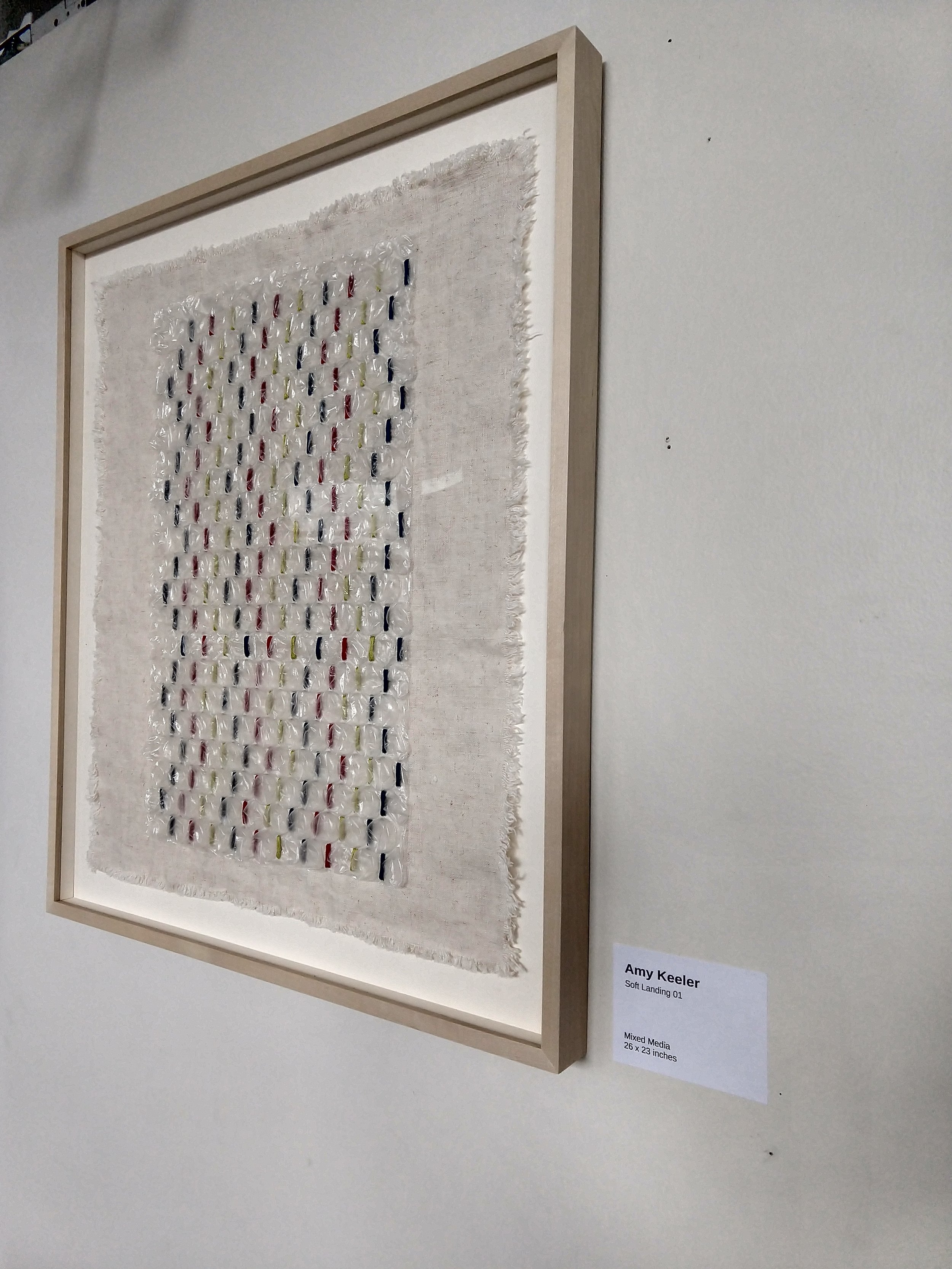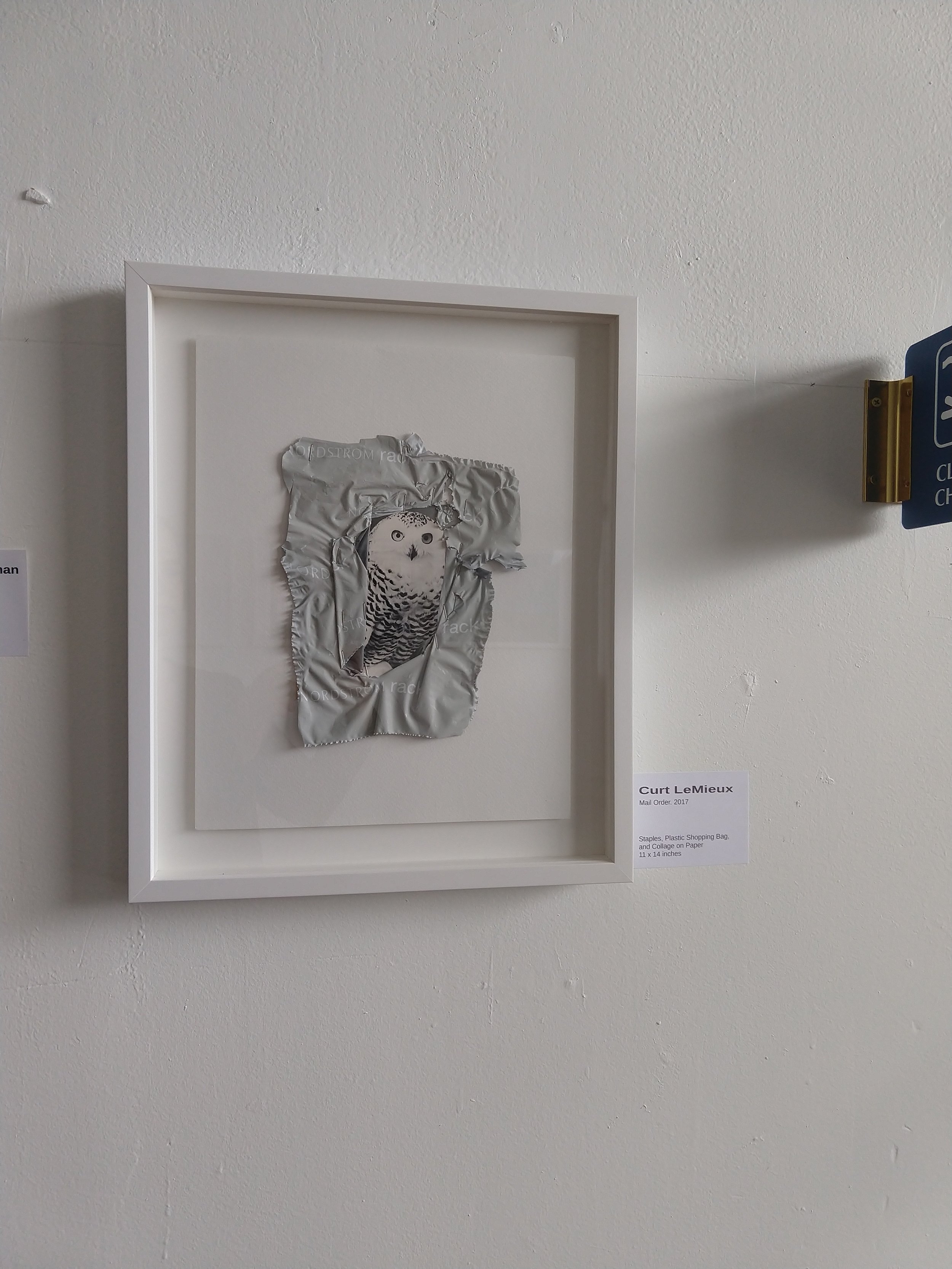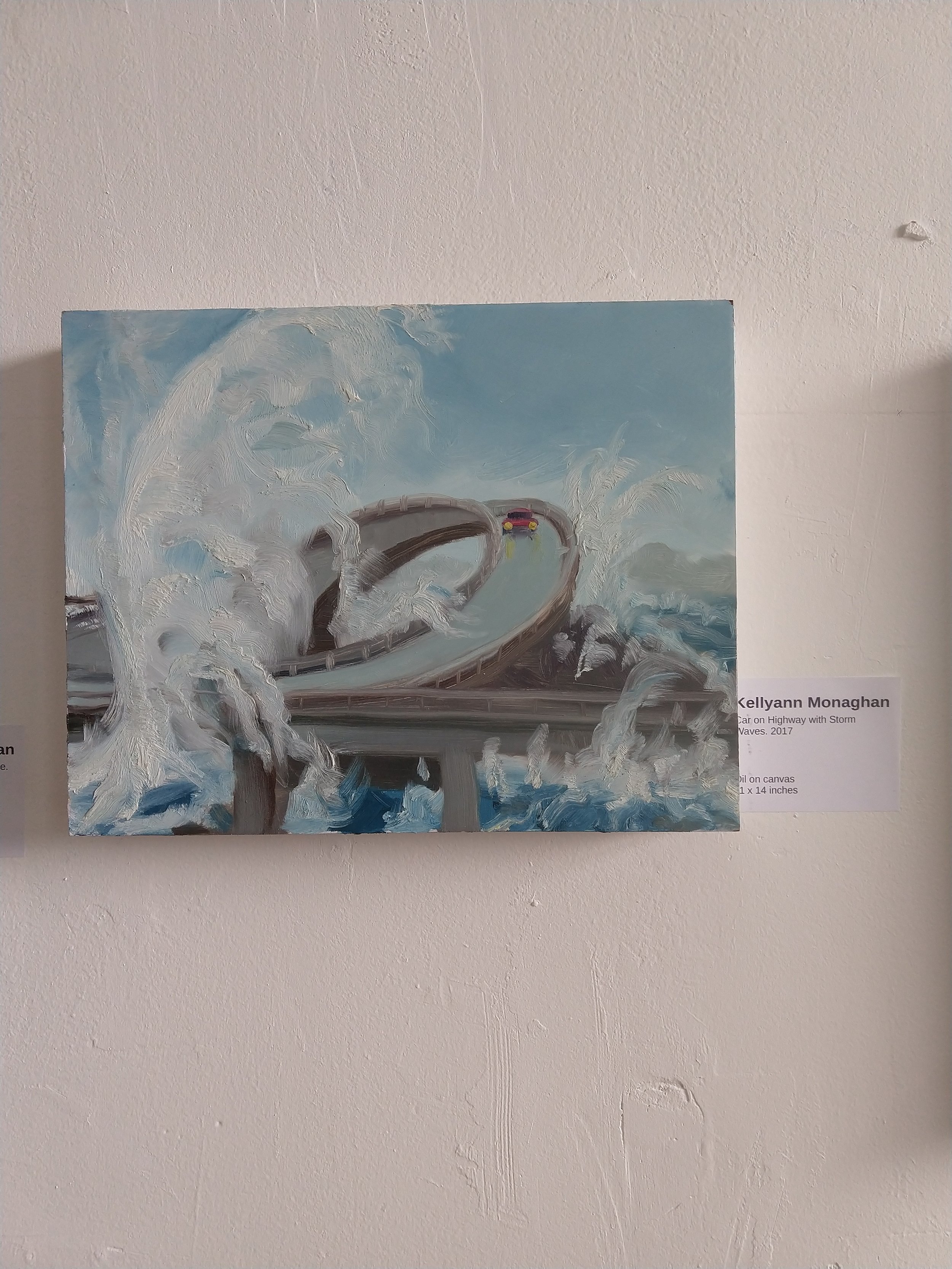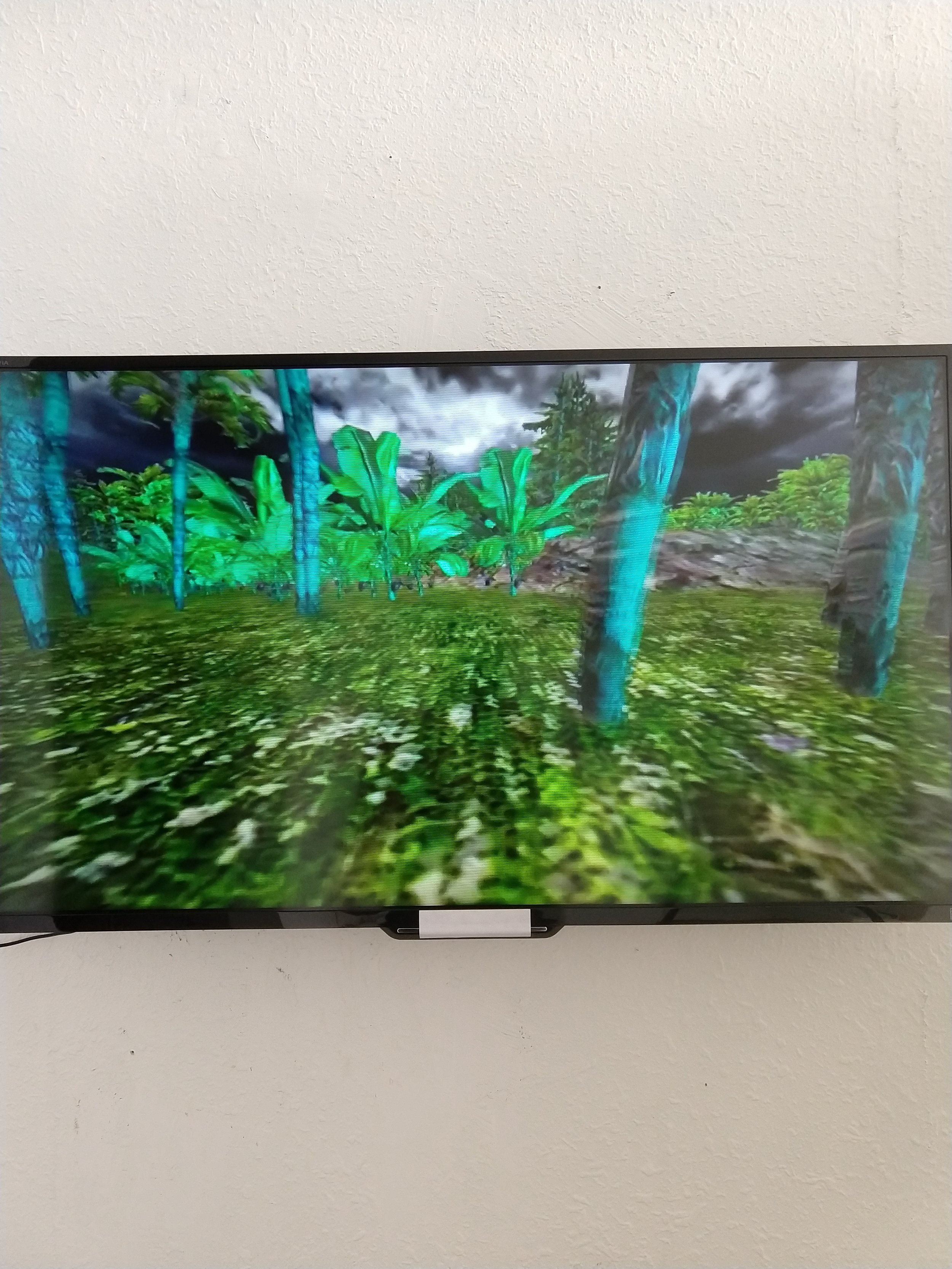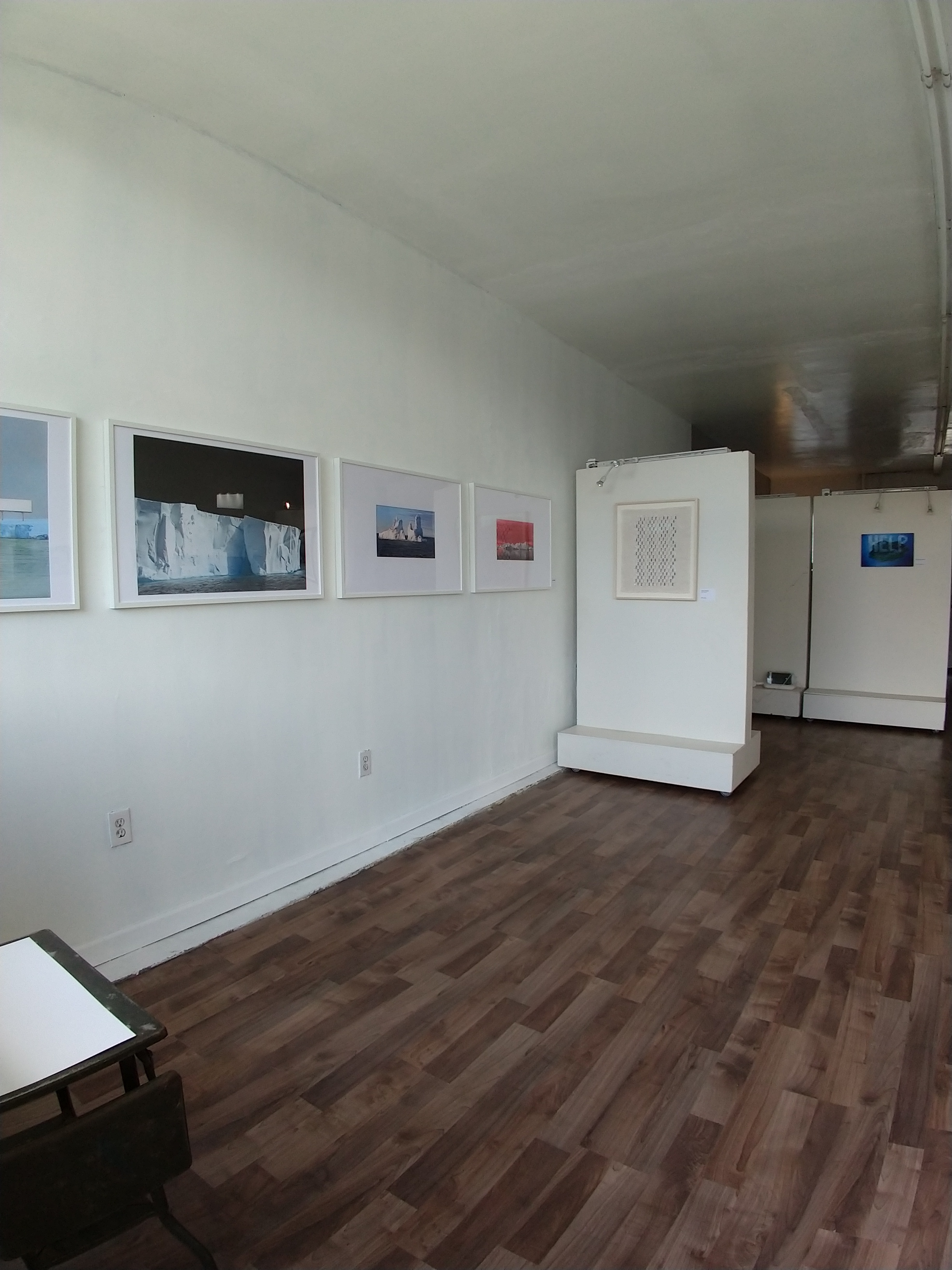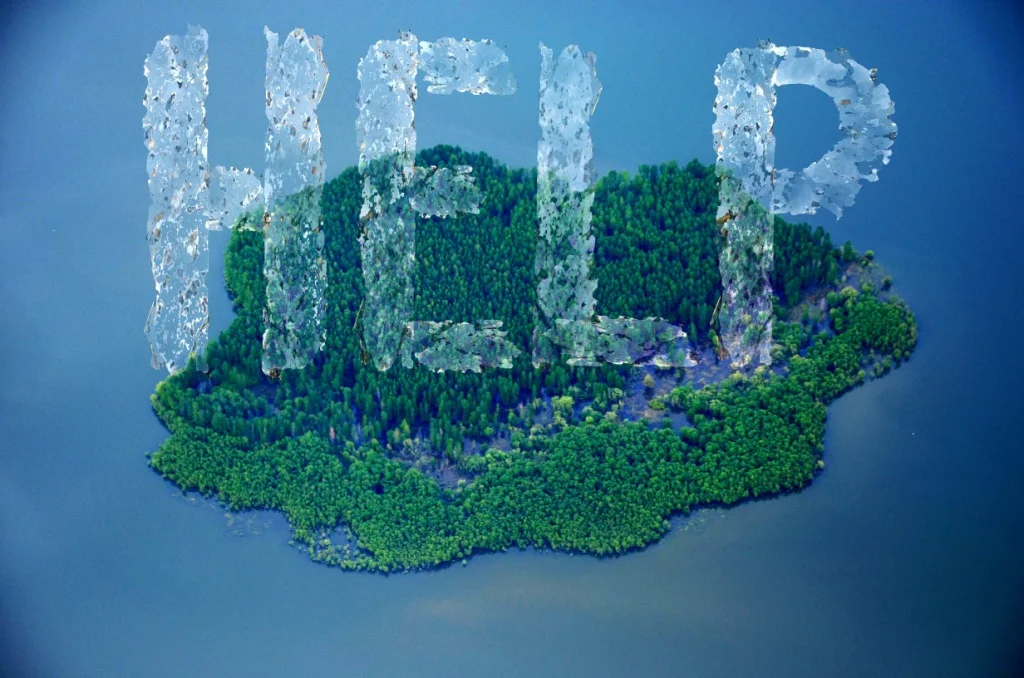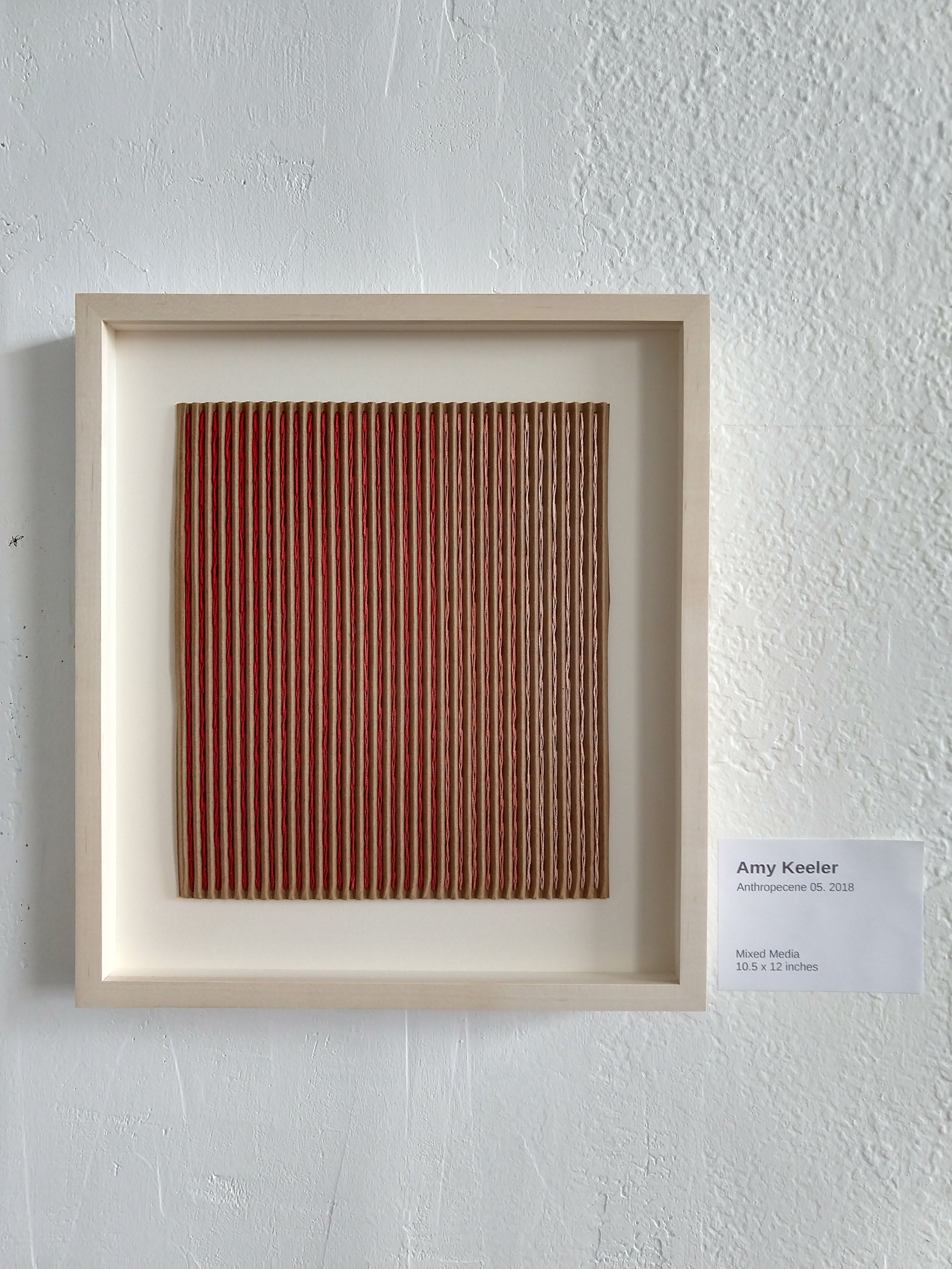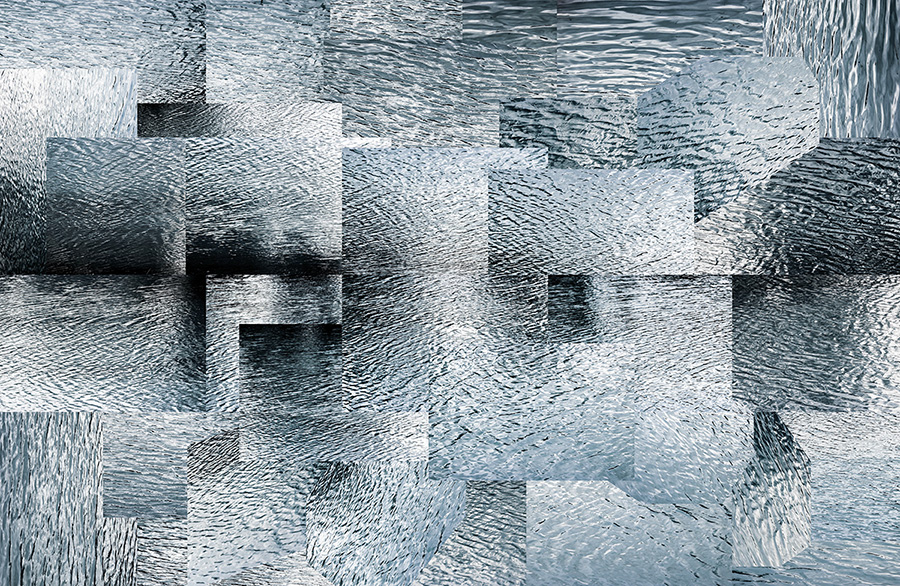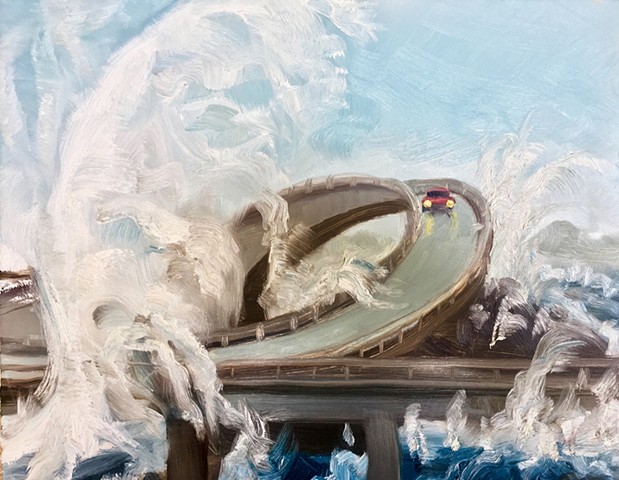
WhatClimate?!
What Climate?!

What Climate?! A climate-centric art exhibit will be n View at HOTE Gallery March 21st- May 12th 2019
I believe art is most powerful when it replicates specific aspects of our surroundings with the touch of the artist. Art is meant to portray an individuals interpretation of the world we inhabit. What I present of the natural environment ranges from tangible to severely abstract. In essence, I strive to present photographs that exemplify the compelling aesthetic that nature exhibits.
As our Climate changes and weather patterns become more extreme, nature leaves evidence that tells tales its magnitude. My photography portrays the effects and traces of climate change, capturing the emotional impact that comes with extreme change. The Unknown can be intriguing, compelling and at times scary, however photography is one of the best ways to expose the unknown in its rawest form and bring it to the public presented in tangible ways.
My work can best be defined as Conceptual Land Art. I am interested in spaces, both physical and psychological and how the two relate to one another. I create site-specific projects in wide-open and extremely remote landscapes, where severance from civilization creates distance from the “real” world. My projects exist only for a few hours or days at a time, before they are disassembled, returning the landscape to its original condition. I document the works through photography, video and text. Because of my close connection to nature and the responsibility I feel towards the planet, several of my installations address environmental concerns. As a result, I have begun to pay more and more attention to the materials I use, often employing the elements around me or my own body as source material. I collect or borrow from nature occasionally introducing man- or machine-made materials as reminders of human civilization.
This piece deals with an on-going climate concern, desertification. I am intrigued by deserts, as they are the most pure and magical landscapes on the planet. In a world where every possible resource is squeezed to its limits, human beings do not seem able of finding many ways to exploit desert lands, and they are left pure and almost untouched by human civilization. Funeral Procession for a Dead Lake is a performance piece that takes the form of a ceremony to pay tribute to Winnemucca Lake and the animal and plant species that are no longer able to inhabit it. Winnemucca Lake was located in the Northwest of Nevada, and was fed by the overflow of Pyramid Lake. This area was a rich and vibrant habitat for wildlife, fish, birds and various marsh and meadow species. In 1903 as part of the Newlands Reclamation Act, the Derby Dam was built on the Truckee River redirecting water to support agriculture in the Fallon and Fernley areas. This caused the water level of Pyramid Lake to decrease considerably, and eventually no water would flow to Winnemucca Lake. In addition, the building of State Highway 447 led to the complete desiccation of the lake by 1939. This ritual incorporated Native American traditions as well as those of other cultures, since the problem of desertification is a global phenomenon. A procession was led by a woman dressed in traditional Western mourning garb followed by a group of mourners carrying signs depicting the flora and fauna that once occupied the area. The procession crossed the dry lake bed and convened in a circle where a eulogy for the lake was recited in the language of the native Paiute Indians. This was followed by the digging of a hole, acting as a symbolic burial site into which each procession member poured a bowl of water. The ceremony culminated in the burning of a pyre made from the wooden signs.
My art practice investigates diverse, interdependent, and symbiotic relationships within natural and man-made environments. Fascinated by alternative realities, disorientation, and flight, I combine disparate experiences to create new narratives, perspectives, and theories. The goal is to identify how patterns and symbols of influence impact perception, social behavior, institutions, history, and truth. Mediums are re-purposed by altering function to explore identity, ideology, and inequality. As a multidisciplinary artist, my practice incorporates drawings, sculpture, site-specific installations, objects, digital, video, and audio. Inspiration, investigation, research, writing, and discovery dictate the final form.
A standard projecting directional sign has been re purposed altering its function. President Donald Trump decided to withdraw the USA from the Paris Climate Agreement. According to Trump: “The concept of global warming was created by and for the Chinese to order to make U.S. manufacturing non-competitive.” The rest of the world will lead fighting to make planet Earth habitable for future generations. Meanwhile, America will be swimming under its own ignorance and denial of science. The Union of Concerned Scientists predict by 2100 the high-end global average range of sea level rise could be 78 inches.
Peter Barnard is a multidisciplinary artist who consistently works across different mediums, predominantly sound, moving image, installation and sculpture. Much of his output varies from sculptural assemblages to sound-based installations and works with analogue film. These works often precede from contrasting associations and encounters that sometimes emerge from the element of chance, all the while exploring recurring themes such as duality, memory and representation. Since graduating, Barnard has exhibited at various art-spaces, galleries and has had his work presented in many screenings and radio broadcasts. He has shown in the United Kingdom, United States, New Zealand, Brussels, Germany and India. Peter Barnard currently lives and works in Buckinghamshire, UK.
I use water as a lens like a kid with a magnifying glass, pulling things - in this case transparent layers of video imagery- apart to study them. I choose to work with liquids – for their transparency and because they’re too slippery for me to fully control. I engage in a process of disorientation and movement. I have always been drawn to physical activities, from drawing to dancing as ways to create connection with the body, the self and providing opportunities to bond with others and community. In my most recent series of videos I have used a hands on process of remaking video by projecting footage of the fires through water. These acts allowed me to process the fires in a new way, created an easier way to be with the remnants and destruction of the natural disasters we continue to witness. The videos will be shown as projections and as video sculptures housed in Mason jars, holding stories and images to preserve them, marking connections between the virtual and physical. I grew up in San Antonio, Texas. Last year my urge to mark those pathways between the environment and people focused on natural disasters - as Hurricane Harvey flooded homes of so many in my home state. These tragedies began to stir a new appreciation of the home left behind. For the first time, I felt a deep pull to return to Texas and collect stories of the current events and of the childhood places in nature I had loved to visit. Logistics did not allow me to travel at the time so I virtually transported to Texas via the internet. While watching the stories of the destruction, I was surprised to remember a love of the intense Texas rain and thunderstorms. Mere days later, Texas evaporated into the background as the 2017 fires of Northern California consumed Bay Area residents thoughts. The overwhelming destruction and sadness moved me deeply and I began collecting stories and footage from the fire. These pieces mark connections between the virtual and physical; connections and pathways, fire and water colliding in the same conduit, expressing the complexity of life - destruction, beauty, anxiety, and love.
“Iceberg” series deals directly with the theme of global warming, caused by men’s actions and activities. I manifest this issue in my work in a poetic manner, presenting elements from the human and urban environment inhabiting the most remote places of the natural world, thus making a comment on the destructive and invasive power of humans. I truly believe a big component in the solution to our global environmental crisis is the creation of awareness in the population on the current fragile state of the natural world. My intention is to bring about positive changes and concrete actions towards the environment through my work. I believe “Icebergs Series” can contribute to this herculean mission with grace, beauty, depth and wonder.
My work intends to create the sensation in viewers of witnessing a new visual nature through the creation of photo-based manipulated landscapes, installations and photo-sculptures. The main components of “Icebergs” series are icebergs and construction structures and equipment like scaffolds and cranes. These are presented establishing new relationships with one another in a surreal manner. These connections bring about issues of adaptation, assimilation, isolation and displacement. Also, they make a reflection on the aggressive intrusion of men into nature even in the most remote places on earth, thus creating awareness of environmental issues. “Icebergs” is photo-based, printed on thick watercolor paper. I work over this surface with pencils and pastels erasing almost completely the photograph underneath. This action also references to the disappearance of icebergs due to global warming caused by man-made actions, just like my drawing. The direct expressions of pencils on paper allow me to create more gestural and expressive, emotionally charged images.
As an artist, one of the most engaging areas of content for me has been the adaptation of wildlife to the influences of human industry. I staged an exhibition on this subject in 2011 at The Armory Center for the Arts in Pasadena and I presented a series of similar collaborative works at Highways Performance Space in Santa Monica in 2016. The work sample I’ve submitted to the selection committee as part of this application represents a current impulse in the studio toward this end. In the newer collage pieces, animal cutouts from vintage encyclopedias, books, and magazines are embedded within brand name packaging, cheap fabrics, and other disposable products; mirroring an apparent lack of concern for the living environment alongside ever-increasing consumerism..
Drawing is the foundation of my practice. Through the execution of hundreds of meditative sketches, I arrive at a set of personalized marks and symbols that lead me to materials and content. In sculpture, painting, assemblage, site-specific works, video, and performance installation, my goal is always to articulate a visual language that promotes inquiry into human behavior and ecology. This archeological approach, wherein layers of meaning are shifted and renegotiated, allows a rehearsal of the ways in which meanings might develop, in which behaviors become codified and understood. Using partially recognizable imagery—abstract and repressed images of humans, animals, architectural and machine like forms—and questionable materials ranging from blobs of paint and glue to non-art materials, such as socks and sticks and other unlikely but charged substances, I reopen their associative meanings, allowing the viewer to explore origins. I deliberately efface or remove large portions of the format of my works, scaring them with staples, nails, tacks, blades, screws and other dulled objects. The brutal and direct reduction of my format reinforces the repressive process in cultural memory, having the effect of coaxing one back toward the moment of definition when image "A" might have been placed alongside "B". Because the rationale for these alignments may be only partially known, or perhaps subterfuge for other meanings, the viewer has the task of deciphering, and in the task must cycle through personal and cultural memory for an answer that, through the processes of erosion, can’t be entirely known. It’s in the not knowing, the attempt at knowing, that a host of real possibilities occur. These images replicate themselves and reconnect the viewer to these speculative early moments in which the original memory pictures might have been, even temporarily, joined and propagated or dismembered and buried.
Marcha Schagen (b. 1991) creates wearable objects, fashion, installations and performances based on artistic research regarding society. Out of the research and physical thinking process derives a creation which can be translated into an object and/or performance. The composition where material, movement and surrounding come together, invites the audience to question and discuss the social issue - Design for Debate.
With her latest project Mineral Waste Dutch artist Marcha Schagen explores if it is possible to create CO₂-negative designs and objects, using the mineral olivine. While processing raw materials mostly has the image of being polluting to the environment, olivine has the potential of purifying the atmosphere. This mineral, richly to be found in the Earth’s mantle, has the unique characteristic of being able to sequester CO₂. In the natural process of weathering, the mineral insulates CO₂ from the environment. It then alters the captured CO₂ into a magnesium bicarbonate solution, a residue that is not polluting. This natural process occurs relatively slow but can be accelerated by putting olivine in contact to water. With using not the olivine stone but it’s form as pulverized sand, the mineral’s reaction surface is being maximized and optimal used to insulate CO₂.
Representations of the four elements started to appear in my work about a year ago. Almost accidentally each element wrestled itself into the conversation in my studio. Earth first, then water, fire, and finally, air. Having grown up in Southern California, the memories of smoggy brown Los Angeles skies of the 1970s are still vivid. With the flash of a pen, hard-won regulations protecting the environment have disappeared and the brown haze is soon to return. Although I am terrified of the repercussions from these reversals, I still find an unexpected and eerie beauty in the pink river behind the chemical plant. I find the physicality of sculpture to be a perfect way of making material my engagement with nature and my concern about the environment. I weave my sculptures with steel wire on a basic handmade loom modeled after those used in early cultures of Turkey, Scandinavia and other parts of Europe. The wire is both pliable and resilient; it allows me to draw in space and create forms that are both structural and flexible. The steel-woven cloth is built up row-by-row, then assembled as a hybrid three-dimensional drawing. I then apply color to give the forms definition. The color is built by spraying layer upon layer of paint to give nuance and depth to the woven forms. The sculptures themselves are both bound and unbound. There is a tension in the woven wire grid holding the form together, that breaks, unraveling and reforming anew. This tension, the irregularity, and the unsettling quality of the work evokes the state of flux of our relationship with nature. In the past we looked toward the elements – earth, water, air, and fire to guide us in the world. Cultures as diverse as the ancient Greeks, Egyptians, Babylonians, Japanese, Tibetans, Indians, and Chinese, all sought to understand the fundamental qualities of nature, and listened to and valued the elements. Today, society is obsessed with material needs and an excess of material desires: convenience, comfort, central air, larger cars, larger houses. Meanwhile the effects of our neglect on the environment become increasingly clear: oceans rise and swallow the land, temperatures fluctuate, wind currents alter the shape of the earth, glaciers melt and fall into the sea, the sky unleashes relentless storms, floods follow, wild fires blaze, and erosion ensues. My pieces in this series represent both the awe and respect that I feel for the elements and for nature, and the dire consequences that I fear we are inviting due to our self-serving actions.
Michael Kenneth Depue takes great interest in exploring the abstract, the historical and finding the hidden meaning. Michael's craft benefits from developing a series of nine or ten pieces which allows him to explore a concept, develop a theme and tell a story. Besides his love of painting, one of his passions is collecting photography from 1860-1960. Most of which is by unknown photographers. Recently he has been working on digitally manipulating these historic images embracing a then-and-now theme. His goal is to create recognition for the collection through his work inspired by it, so that one day he will bestow it to the community by donating it to the Smithsonian. He's grateful of the fact that all forms of art are respected and that anything goes. Art can be as beautiful or outrageous, as joyful or rude, as sentimental or political - all supported by the freedom of expression. The parched image reminds us of how important it is to clear the dry brush around our homes so as not to add fuel to the potential of fire.
The weather, storms and natural disasters in my paintings are both a literal reaction to our world's occurrences and symbolic for the angst filled conflicts of our times..
I use landscapes, rural, urban and weather as a journey and stage for the drama of light, air and movement. I attempt to see past the structured forms into the otherworldly qualities of the landscape. I am intrigued by the way light plays on natural configurations, energizing and describing turbulence. There is a mystery in the dynamics of light and atmosphere in contrast to the landscape structures. Stormy weather and extreme climate conditions permeating the natural landscape have become a new trajectory in my painting. The surface of the paintings erupts with textured and expressive gestural marks, which are depictions of sweeping weather events. The weather is instinctive inspiration for my tendencies as an alla prima painter. I find there to be an unsettling beauty in observing mother-nature in this painterly approach. My aim is to maintain an element of spontaneity and directness in the paint. A fluid and spontaneous quality in every paint stroke is very important to me. I primarily work all prima. I edit, emphasize and exaggerate structural and organic forms. The process allows for idiosyncratic and unexpected painterly qualities to occur. The nuances of light, atmosphere and weather generate a constant awe, sometimes fear and surprise. At times the awe is when you are hoping to see it and other moments it is a surprise in revealing spaces. The painting process is not just an analytical process for me, but is a revelation in every visual moment.
Amy Keeler is a California mixed media artist whose current work explores themes of waste, mass production, instant gratification, and living in a disposable society and world. Working with materials that are typically considered "trash" after they have served their one-time use, highlights the ways in which we must reconsider and change how we acquire, consume, and dispose to protect our environment and planet.
Amy's work is heavily inspired by the beauty of the natural world and, like many, she is deeply troubled by the state of our collapsing environment, ecosystems, and planet. The defective ways in which we have constructed our world for matters of convenience and "advancement" drive her work. The hope is that it will spark necessary conversations about how we must dramatically change how we move about in this shared world in order to ensure its survival.
Edward Burke in his 1757 treatise on aesthetics: “A Philosophical Enquiry into the Origin of Our Ideas of the Sublime and the Beautiful” describes the Beautiful as what is well formed and aesthetically pleasing, whereas the Sublime is what has the power to compel and destroy us. Romanticist painter Casper David Friedrich in response created evocations of infinite nature, the divinity and obscurity in representation of landscape. This collection of paintings elude exact definition, instead using paint as an indication at the terrifying and awesome. Dried riverbeds, sinkholes, wastewater spills, and craters seem to coexist comfortably with beauty and sublimity; these particular locations are source images from reportage media. ‘Interfered Landscape’ considers the fusing of both ecological and cultural elements, how these forces contend with each other and how we exist among them. These landscape paintings, examine contradictions of the real and imagined, the dangerous and serene, and the instability of the world around us and all that we can see.
I have always had a soft spot for misfits, outcasts and eccentrics. I like to take things that have been rejected in some way, whether in the last chance clearance bead bin, or in a pile of tossed out records at urban ore, and give them a new life and purpose. Over the years, I have had the opportunity to explore many art forms, and to also find a way to use the throw away scraps from each form. While foraging through thrift stores and junk yards for treasures, I always feel I have helped give a discarded object a new lease on life, and it makes me feel human. Using old photographs or photos of old things serves a similar purpose. I find inspiration in the Figurative arts movement, which sought, through its representational qualities, to explore the nature of art. I also like to give a perpetual nod the anti-bourgeois Dada movement, which used photos and collage (not considered real art materials or techniques 100 years ago) to create social commentary and to redefine the meaning of 'Art'.
